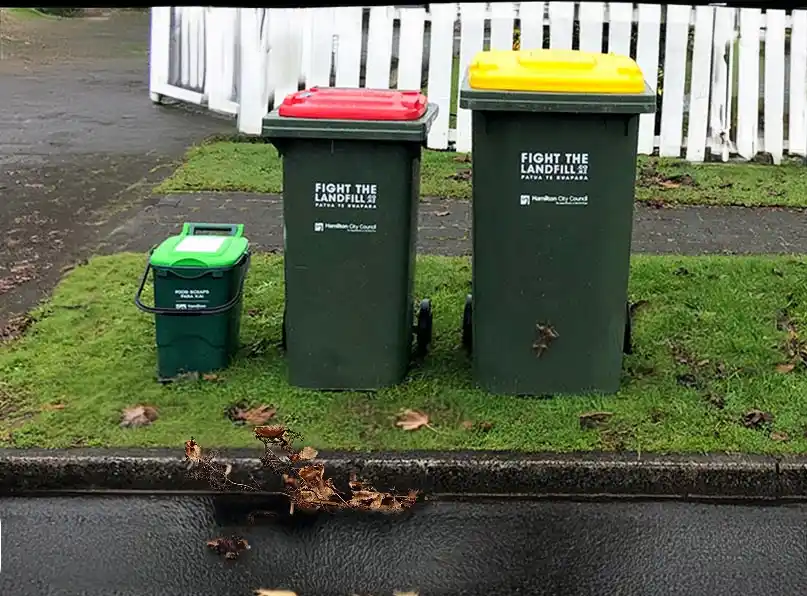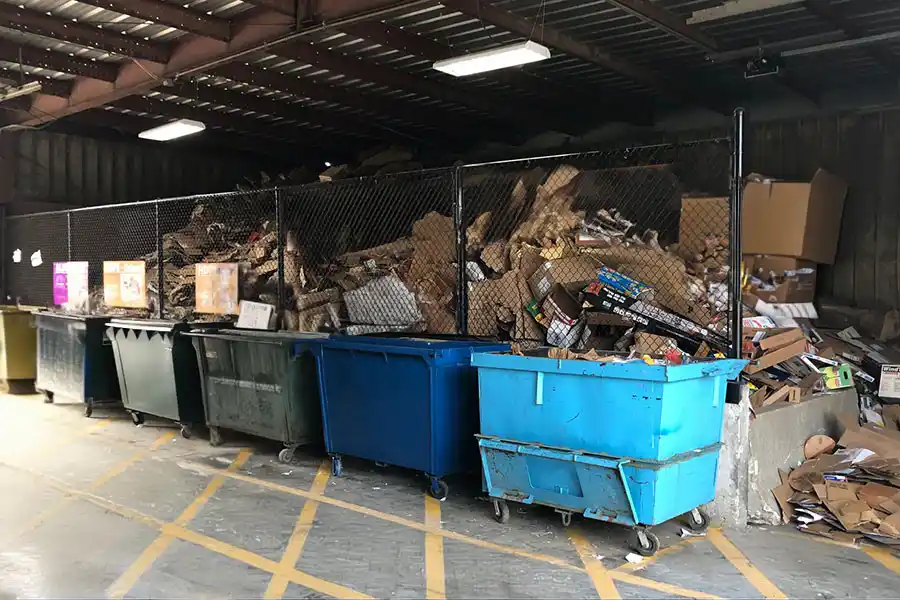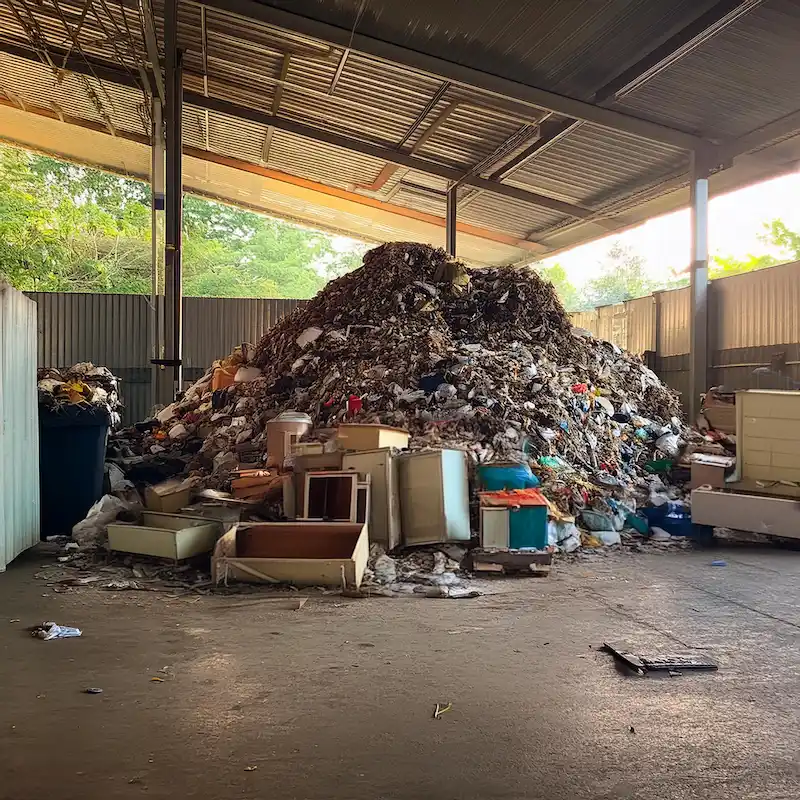Put out your rubbish for collection: A guide – the Kerbside collection
Checklist: What Goes In, What Doesn’t, and Why It’s Important…
Alright, let’s dive deeper into the wonderful world of council bins. It’s like a bizarre game of Tetris, but instead of blocks, you’re sorting your rubbish. Exciting stuff, I know!
“Kerbside” Collection: What Goes Where
Alright, let’s dive deeper into the wonderful world of council bins. It’s like a bizarre game of Tetris, but instead of blocks, you’re sorting your rubbish. Exciting stuff, I know!

Kerbside Collection: What Goes Where
Food Scraps Bin (The “Guilt” Bin)
- Weekly collection (because food waste smells worse than your uncle’s socks)
- For fruit, vegetables, cooked food, meat, fish, coffee grounds, etc.
- Basically, everything you promised yourself you’d eat but didn’t
Think of this bin as a confessional for your dietary sins. Those bananas you let turn black? In they go. The leftovers from your failed attempt at recreating Masterchef? Chuck ’em in. It’s like a time capsule of culinary regrets.
Glass Crate (The “Clinking” Bin)
- Fortnightly collection with yellow recycling bin and food scraps bin
- For glass bottles and jars
This is where your empties go to reminisce about the good times. Wine bottles, jam jars, that fancy olive oil bottle you bought to impress your mother-in-law – they all end up here. Just remember to rinse them first. No one wants to smell last week’s pasta sauce.
Red Rubbish Wheelie Bin (The “Last Resort” Bin)
- Fortnightly collection alternating with recycling
- For items that cannot be reused, recycled or donated
This is the bin of shame. If it can’t be recycled, composted, or pawned off on your neighbours, it goes here. It’s like the Island of Misfit Toys, but for rubbish.
Yellow Recycling Wheelie Bin (The “Feel Good” Bin)
- Fortnightly collection alternating with rubbish
- For plastics 1, 2 and 5, tins, cans, paper and cardboard
This is where you put all the stuff that makes you feel like you’re saving the planet. It’s like a superhero’s lair, but instead of capes and gadgets, it’s full of milk bottles and baked bean tins.
Now, let’s talk about those pesky weeds. You know, the plants that grow where you don’t want them to, faster than you can say “Round-Up”.
How to Dispose of Weeds: The Green Menace
Weeds are like that annoying relative who shows up uninvited and refuses to leave. They spread faster than gossip at a family BBQ, so you’ve got to be careful when disposing of them.
Compost and Mulch Weeds
- Use a closed compost bin or special weed bags
- You might be able to mulch and re-use the weeds on your garden
Sounds great, right? Well, hold your horses. Before you start chucking weeds in your compost like confetti at a wedding, check if the species is safe to compost. Some weeds are more persistent than a telemarketer – they’ll survive the composting process and come back stronger.
Some species, like the moth plant, are trickier than a politician’s promise. These can only be composted through a garden waste collection service, not at home. It’s like they need a professional therapist to break them down.
For the really nasty ones – the noxious weeds – you can put them in your rubbish bin. It’s like sending them to weed prison.
Recycle Right: The Plastic Number Game
From 1 February 2024, we’re playing a new game called “Spot the Number”. The Ministry for the Environment has decreed that only plastics numbered 1, 2, and 5 can go in kerbside recycling bins. It’s like a weird lottery where instead of winning money, you get to feel smug about recycling correctly.
Glass is still collected separately in your green/blue crate. Because apparently, glass needs its own special container. It’s the diva of the recycling world.
Here’s what you can recycle:
- Soft drink, juice, water, and milk bottles (usually plastics numbered 1)
- Bathroom and laundry product bottles (usually plastics numbered 2)
- Large yoghurt and ice cream tubs, margarine/butter tubs (usually plastics numbered 5)
- Some pharmaceutical, cosmetics, sauce, and refillable bottles (usually plastics numbered 5)
- Fruit punnets and meat trays (usually plastics numbered 1)
- Clean drink cans and food tins
- Paper and cardboard including pizza boxes (food scraps removed)
Where do materials that you can’t use the council waste bins go?
Alright, Kiwis, grab your gumboots and let’s wade into the murky waters of waste that doesn’t fit neatly into your council bins. You know, the stuff that makes you scratch your head and wonder, “Where the heck am I supposed to chuck this?”
First off, let’s talk about Resource Recovery Centres. These places are like the Swiss Army knives of waste management – they handle just about everything. Think of them as the final boss in the video game of rubbish disposal. They’re where you take all those odds and ends that don’t belong in your kerbside collection.
Now, you might be thinking, “But mate, I can’t be bothered driving to a recovery centre every time I have a weird bit of rubbish.” And fair enough – nobody wants to spend their Saturday morning queuing up to dispose of a broken toaster. That’s where skip bins come in handy. It’s like having a miniature Resource Recovery Centre in your driveway. More on that later.
Let’s break down some of the common types of waste that need special attention:
- E-waste: Your old phones, computers, and that Tamagotchi from 1997 that you found in the back of your drawer. These items contain all sorts of nasty chemicals that shouldn’t end up in landfill. Many electronics stores and some councils offer e-waste recycling services. They’ll make sure the valuable materials get recovered and the toxic bits are disposed of safely.
- Hazardous waste: This includes things like paint, motor oil, batteries, and chemicals. You know, the stuff that would make a great prop in a mad scientist’s lab. These items need special handling to prevent environmental contamination. Many councils have designated drop-off points for hazardous waste, often at transfer stations or Resource Recovery Centres.
- Large items: That couch your cat destroyed, the fridge that finally gave up the ghost, or the mattress that’s seen better days. These bulky items often require a special collection service or a trip to the transfer station. Some councils offer occasional inorganic collections, but don’t count on it – it’s about as reliable as Wellington weather.
- Green waste: While some lucky ducks have a green waste bin, many of us are left scratching our heads over what to do with our hedge trimmings and lawn clippings. You could compost it yourself (if you’re feeling ambitious), take it to a green waste facility, or hire a skip bin for larger amounts.
- Construction and demolition waste: If you’re renovating your house or finally getting around to that DIY project you’ve been putting off since 2010, you’ll likely end up with a pile of waste that doesn’t fit in your regular bin. This stuff often includes materials that can be recycled, like metal and clean wood, so it’s worth separating it out.
- Aerosols, pots, pans, and foil (save those for your next DIY space helmet)
- Tissues and paper towels (these usually have food scraps or cleaning chemical residue)
- Takeaway coffee cups, drink cartons, shiny gift wrap (these items can include other materials like plastic or metal)
- Soft plastics (any plastics that can be scrunched into a ball)
- Compostable packaging and containers (despite what the name suggests)
- Nappies and sanitary products (just… no)
- Fabric and clothing (your local op shop called, they want your donations)
What am i do to with the household refuse
Refuse refers to waste or unwanted materials that are discarded or rejected, often in a manner that is not environmentally friendly or responsible. Refuse can include a wide range of materials, such as
That is were we should talk about Resource Recovery Centres in more detail. These places are like the Disneyland of waste disposal (I know, contain your excitement). They accept a wide range of materials that can’t go in your kerbside collection. Here’s what you can typically expect to find:
- Recycling facilities for paper, cardboard, glass, plastics, and metals
- E-waste collection points
- Hazardous waste disposal areas
- Green waste drop-off
- Reuse shops where you can donate or buy second-hand items
- Facilities for recycling construction and demolition waste
- Areas for disposing of large household items
Some centres even have education programs to help you become a waste wizard. It’s like Hogwarts, but instead of learning magic, you’re learning how to sort your rubbish properly.
Where to Dispose of Household Waste in Hamilton, Waikato
For Hamiltonians wondering what to do with household waste that doesn’t belong in council bins, the Lincoln Street Resource Recovery Centre is your one-stop-shop. Here’s a breakdown of what you can dispose of and how:
Recyclable Products (Free Disposal):
- Glass
- Plastic 1, 2 and 5
- Cans & tins
- Cardboard
- Paper
- Whiteware (e.g., fridges, washing machines)
- Metal
- E-waste
- Plastic lids (e.g., milk bottle lids or fizzy drink lids)
- Metal lids (e.g., glass bottle lids or jar lids)
- Dry cell batteries (e.g., AAA batteries and lithium batteries)
- Lead-acid batteries (e.g., car batteries)
Other Waste (Fees Apply):
- Green waste (including flax and palm)
- Cleanfill
- Concrete
- Tyres
- Wood
- Polystyrene

Green Waste Alternative: For green waste disposal, you can also check out Hamilton Organic in Frankton.
Hazardous Substances:
Many common household products are classified as hazardous substances. These require special handling and disposal to protect your health and the environment. Examples include:
- Motor oil and waste oil
- Cleaning fluids (bleaching agents, oven and drain cleaners)
- Solvents (mineral turpentine, methylated spirits, paint thinners)
- Adhesives (especially those containing solvents)
- Garden chemicals (herbicides, fungicides, insecticides)
- Pool chemicals
- Dyes (textile and hair dyes)
- Stored fuels (petrol, LPG, diesel, oil)
- Old gas cylinders
- Car batteries and antifreeze
- Aerosols
Disposing of Hazardous Substances:
- The Transfer Station on Lincoln Street may accept some household hazardous substances.
- Always check the original container for safe disposal instructions.
- Never pour unwanted chemicals down the sink, storm water drain, or onto the ground.
Remember, proper disposal of these items is crucial for protecting our environment and community health. The Lincoln Street Resource Recovery Centre is doing the Waikato a solid by accepting such a wide range of materials. It’s like the Swiss Army knife of waste management centers – versatile, efficient, and indispensable to any good Kiwi household.
So next time you’re scratching your head over where to chuck that old fridge or that mysterious can of chemicals you found in the back of the garage, remember: Lincoln Street is your go-to. It’s turning Hamilton’s trash into treasure (or at least, into responsibly managed waste), one hazardous substance at a time.
And hey, while you’re there, why not make a day of it? Nothing says “fun family outing” like a trip to the Resource Recovery Centre. You might even find a new conversation piece in the e-waste pile. Just kidding – please don’t take stuff home from the Recovery Centre. That’s not how this works.
But let’s be real – not all of us have the time (or the vehicle) to lug our waste to these centres. That’s where skip bins come in. They’re like the Mary Poppins bag of waste disposal – seemingly bottomless and able to handle just about anything you throw at them.
Skip bins come in various sizes, from dinky 3 cubic meters bins perfect for a small garden clean-up, to massive 15 cubic meters monsters that could probably swallow your entire house. They’re great for:
- Home renovations and DIY projects
- Garden and landscape makeovers
- Moving house (because let’s face it, we all discover how much junk we’ve accumulated when we move)
- Estate clearances
- Commercial and industrial waste
The beauty of skip bins is that they come to you. No need to make multiple trips to the tip or try to tetris a broken washing machine into your Suzuki Swift. Plus, reputable skip bin companies will sort through the waste and recycle what they can, so you can feel a bit less guilty about that mountain of rubbish you’ve produced.
But wait, there’s more! (I sound like a late-night infomercial, don’t I?) For those smaller jobs or if you don’t have space for a skip bin, there are skip bags. These are like the hipster cousins of skip bins – more flexible and able to fit into tighter spaces. You buy the bag, fill it up, and then call for collection. It’s perfect for those times when you need to dispose of more than your council bins can handle, but not enough to warrant a full skip.
Now, I know what you’re thinking. “This all sounds great, but what about the cost?” Well, my frugal friend, while hiring a skip or taking your waste to a Resource Recovery Centre isn’t free, it’s often cheaper than you might expect. Plus, think of the cost to the environment if this stuff ends up in landfill. It’s like buying a reusable coffee cup – a small investment now for a big payoff in the long run.
So, next time you’re staring at a pile of waste that doesn’t fit into your council bins, don’t panic. Remember, there’s a solution for every type of trash, from your garden weeds to your great-aunt’s collection of porcelain cats. Whether you choose to make a trip to your local Resource Recovery Centre or hire a skip, you’re doing your bit to keep New Zealand clean and green. And isn’t that worth more than a few extra dollars and a bit of effort? (The answer is yes, in case you were wondering.)

Give the friendly team at Purpose Fill a call on 0800 501 020 or fill out our form and our customer care team
Or you may think hiring skin bins and getting our skip bags for your rubbish removal project is a simple task.
